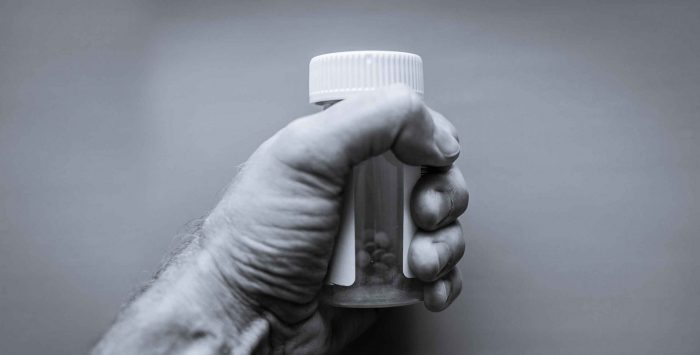Welcome to Medicare Heads Up, a regular feature intended to deliver state and national Medicare-related headlines that will keep consumers abreast of developments that affect their coverage and costs. This week:
Medicare to cover opioid use disorder in 2020
Beginning in January of 2020, Medicare will cover treatment services for opioid use disorder. The benefit will be available at Medicare-approved Opioid Treatment Programs, and available for Part B beneficiaries. Between 2010 and 2015, opioid-related hospitalizations increased 34 percent for those 65 years of age and older.
Medicare Advantage searches ‘burning up’ Google
A week after the start of Medicare’s open enrollment period, consumers appeared to searching for Medicare Advantage information at an unprecedented level. Data from the Google Trends site indicates that searches for the term “Medicare Advantage” appear to be “by far the highest level of search activity” for the term “since the program came to life,” according to Allison Bell at ThinkAdvisor. One possible reason: higher costs, notes Bell. “Searches combining ‘Medicare Advantage’ and ‘cost’ seem to be much more popular than they were a year ago.”
Medicare improper payment rate lowest since 2010
The Medicare improper payment rate has continued to fall to its lowest level since 2010. In 2019, only 7.25 percent of all Original Medicare (fee-for-service) payments fell under the improper payments category, down from 8.12 percent in 2018. This marks a $7 billion savings from 2017, and the third year in a row that improper spending was under 10 percent, as required by a 2010 law. Improper payments aren’t necessarily fraud, but do include payments of invoices submitted to Medicare for services that don’t fall under covered services, or were double-billed. The largest decrease in improper payments were seen in home healthcare claims, various Medicare Part B services, and invoices for durable medical equipment. The third year of progress comes amidst the launch of a CMS initiative to improve Medicare cost efficiency and cut waste and fraud.
Employer-based Medicare Advantage plans enrollment spikes
The number of Americans-enrolled in employer based Medicare Advantage (MA) plans jumped almost 8 percent from the end of 2018 to 4.5 million people. Medicare Advantage Employer Group Waiver Plans (MA-EGWP), now comprise almost 20 percent of all 22 million MA subscribers. The employer-based plans are modified MA plans, and provide a way for employers to offer employees healthcare in retirement with the added benefit of transitioning from work to retirement on the same health plan. California leads the nation with over 622,000 MA employer-based enrollees as of October 2019, followed by Michigan and Texas.
Prescription drug spending tops Medicare beneficiary costs
Total spending per Medicare beneficiary remained flat from 2010 through 2016 with the exception of a 38 percent increase on prescription drugs. The significant increase in spending on prescriptions – over $1,000 annually – was offset by a 22 percent drop in hospital charges and a 30 percent cut in spending for skilled nursing home care. In 2016, Medicare beneficiaries spent more on prescription drugs ($3,896) than on provider visits ($1,637) and hospital bills ($2,716). The higher drug costs were felt most severely by beneficiaries in the lowest income brackets – for those earning less than $19,000 a year, two-thirds spent 10 percent or more of their income on medical care.
Rural hospital denied appeal over Medicare payments
In more bad news for the nation’s rural hospitals, the Supreme Court recently declined to hear an appeal from Unity HealthCare of Muscatine, Iowa over a reduction in Medicare reimbursements paid to the rural hospital. Unity HealthCare disputed a circuit appeals court ruling which determined CMS was within its rights to decide Medicare reimbursement rates using a process known as volume decrease adjustments. The adjustments occur when a facility’s patient numbers have declined more than 5 percent per fiscal period. As rural populations continue to dwindle, and hospitals struggle for survival, these decreases in Medicare payments could be the death knell for rural hospitals, which many times serve as a regions sole hospital.
Medicare reimbursement policies pegged to higher home-care costs
According to a recent Cost of Care survey, the rising cost of home-based health-care is partly linked to new changes to Medicare’s post-acute reimbursement rules including incentives which possibly could lead to faster hospital discharges and greater home-care demands. Nationally, there was a 7 percent increase in costs from 2018 – now averaging $51,480 for full-time non-medical in-home care (such as housekeepers or personal caregivers). Costs vary state by state, with Washington topping out and averaging $68,640 a year. The survey also cited a tight labor market and increased regulations for home care and wages as reasons for the increase. To address the growing need of seniors aging at home, the competitive Medicare Advantage marketplace has begun to offer plans that include non-medical home care services, but they remain a rarity, making up only 2 percent of plans in 2020.
Jesse Migneault is a journalist and editor who has written about business, government and healthcare – including public and private-payer health insurance. His articles have appeared in HealthPayerIntelligence, the Hartford Courant, Portsmouth Herald, Seacoastonline.com, Foster’s Daily Democrat, and York County Coast Star.
In addition, his work has been cited by health industry stakeholders such as the Eugene S. Farley Health Policy Center, Association of Healthcare Journalists, American Academy of Actuaries, Kaiser Permanente, blueEHR, San Diego Law Review, Medicare Agent News, healthjournalism.org, and Concierge Medicine among others.
Tags: in-home care, Medicare Advantage, Medicare Heads Up

